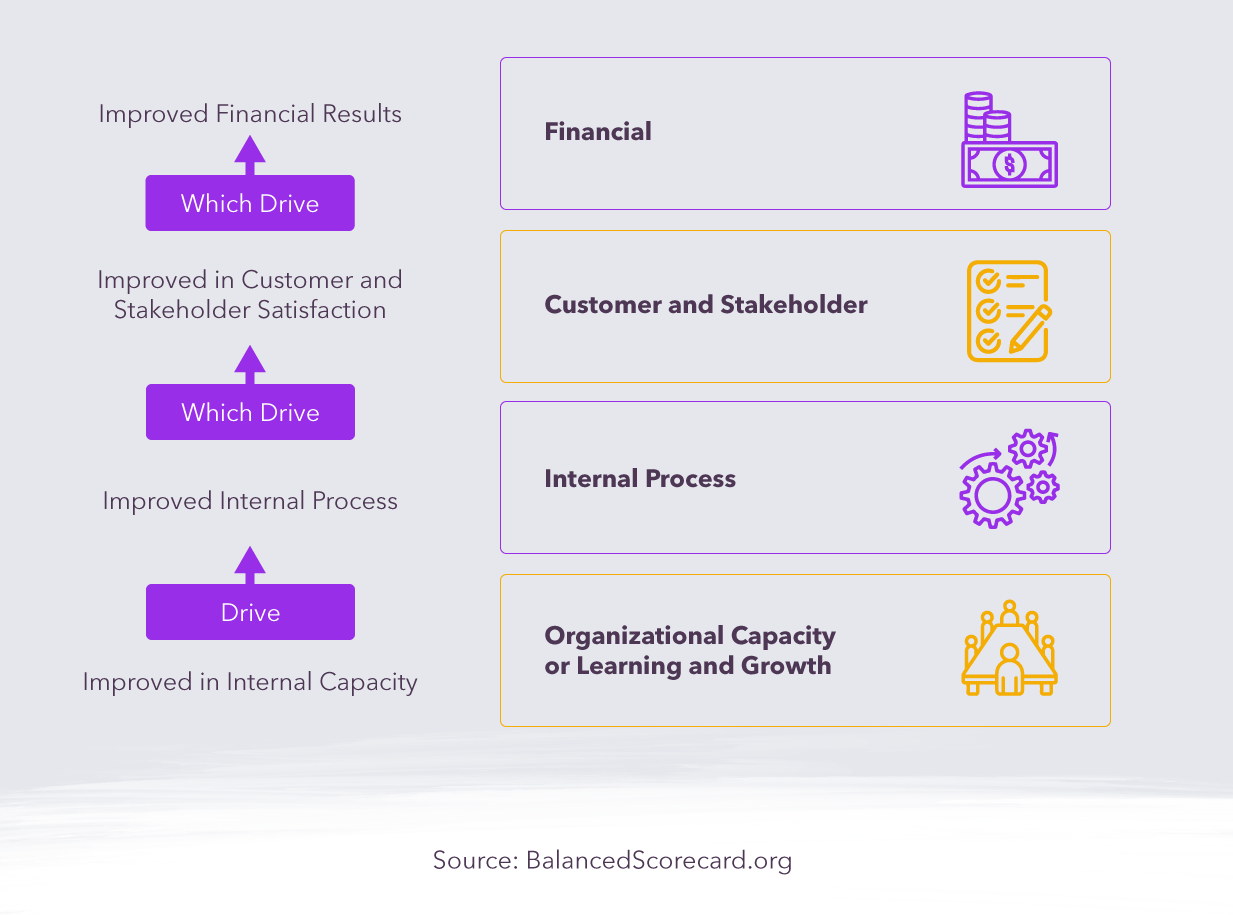The 5 Biggest Benefits of KPIs for Your Team

As we’ve cataloged in this blog, Jobsity is confident it can meet the needs of every client because of our structured and efficient use of OKRs. But how do we—internally—ensure that every developer on our team is able to grow and work to his or her full potential?
The answer is KPIs, or Key Performance Indicators. If OKRs keep us oriented toward our collective goals, KPIs allow us to ascertain the potential and the performance of each teammate. There is no guessing, only assessing!
In this article, we explain the background behind KPIs, what they are, how they work to keep Jobsity expressing its full professional potential, and our 5 “biggest benefits,” or reasons why KPIs might be the right move for your organization, too.
KPIs: Foundations & Jobsity
The date of origin or individual who invented KPIs is unknown, but the principle of setting and measuring metrics for evaluating business success has been around for ages. KPIs, specifically, became popular in the 1980s as a way to evaluate and track progress to goal—and then even more so in the 1990s because the robust infrastructure of KPI tracking dashboards developed to aid in their application and use.
Today, KPIs are standard across many industries. But this doesn’t mean they are well understood, or well-used.
As business writer Rick Yvanovich writes for TRG International, “KPIs are...future-oriented, closely linked with strategic objectives and explicitly indicative of required actions.”
That means that unlike other performance measures (like RIs which summarize departmental performance, or KRIs, which track a company’s historical performance), KPIs are targeted measures tied to objectives that seek to improve future performance by being linked to specific, concrete actions teammates can do today.
In Kaplan and Norton’s ‘Balanced Scorecard’ KPI Framework, there are 4 dimensions which a business may choose as a starting point for building KPIs: financial (including sales growth, return on investment), customer (including market share, customer satisfaction), internal processes (including labor efficiency, turnover), employee learning and growth (including employee satisfaction, investment in innovation).

At Jobsity, this takes the form of understanding each developer's relationship with their work, with their learning, and with their relationships to each client they service.
In this way, our KPIs track:
- Organizational Capacity/Learning and Growth; how are our developers growing as coders, as innovators, as team players.
- Internal processes: are developers submitting work on time, are there workflow bottlenecks, etc.
- Customer and Stakeholder processes: do developers have issues with clients, how long are their client relationships lasting, are they receiving feedback, and is it positive or negative, etc.
As our entire enterprise is built around OKRs, these KPIs help ensure we know who and what is contributing to our Objectives and Key Results individually, so we can assess where potential is not-yet tapped and where it is. (Because if we can identify it, then we can optimize it!).
The 5 Biggest Benefits of KPIs
While we at Jobsity are KPI evangelists, because we’ve seen it work wonders for our team, the following are five benefits that KPIs can provide across industries, across teams, and across applications:
- Avoid Delays
Because KPIs are actionable, forward-oriented, and evolve as your projects progress, they can help control your project’s process by correcting the distribution of tasks as each project advances. If you use a KPI dashboard, you become aware of where your projects are nearing completion, or where they are stalled, long before due dates arrive or problems arise. This can be essential to ensuring optimum performance from your team, allowing you to reward your best workers for their abilities, and ensuring that every project you begin is completed well and on time.
- Real-Time Monitoring
Unlike yearly team objectives or quarterly performance management systems, KPIs are dynamic and ongoing, so that a manager or managerial team can monitor progress as a project unfolds. This means every metric alerts teammates and management about what is working and what isn’t—in real-time; and so real-time adjustments can be made in order to maximize talent, troubleshoot issues, change what isn't working, or double down on what is—without having to lose time, or money, or resources waiting for things to go wrong.
- Clarity and Fairness
Because KPIs are easy to track in a dashboard (and in real-time), using them to assess team performance is easy to keep transparent. When you share your objectives and key results, it’s important to get everyone on board, but it’s not always clear exactly who is meant to do what in pursuit of them. KPIs solve this. The nature of the KPI is individual and concrete; when you share KPIs with your team, it will empower them by spelling out exactly what they need to do in order to achieve success. This means there’s no fine print and no secrets. Everyone has equal access to success, and knows when to ask for help—which is better for company culture as well as for the bottom line.
- Flexible and Specific
A well-built KPI should cascade up to the achievement of your company’s OKRs. In other words, KPIs shouldn’t be separate from the essential goal of your business—rather, they should directly support the concrete achievement of these goals. What makes KPIs useful in this pursuit is that they are built according to the specific contribution of each team, and even each teammate, based on their specific contribution to this top-line goal. In other words, your sales team will have different KPIs than your Python developers, but both of them can work— in their own specific and flexible way—toward the objective: “be the longest retained nearshore firm in the Americas.”
- Save Money and Increase ROI
Most systems rolled out in business will eventually get the axe if they don’t do one thing: save money. It’s just the name of the game. KPIs are no different. Part of their enduring value to so many industries is that they tend to save companies money. How? By helping teams get granular about what is working and what isn’t, what is contributing to ROI, and what is wasting employee time (and thus money). If you can monitor the effectiveness of a collaboration, you’ll quickly know if it's wasting or saving time, and you’ll be able to react accordingly. This not only makes for a better customer experience and a happier client, but it means more money in the bank as well.
Not every solution is right for every business, but the applicability and usefulness of KPIs make them one of those unique tools that just might be worth investigating for everybody. At Jobsity, they make the difference between being a high-achieving team, and being the most effective nearshore development operation in all of South America. We can’t say it’s because of KPIs, but we know that they definitely help!
If you have questions about using KPIs with your team, don’t hesitate to reach out!
Interested in hiring talented Latin American nearshore developers to add capacity to your team? Contact Jobsity: the nearshore staff augmentation choice for U.S. companies.
Andres was born in Quito, Ecuador, where he was raised with an appreciation for cultural exchange. After graduating from Universidad San Francisco de Quito, he worked for a number of companies in the US, before earning his MBA from Fordham University in New York City. While a student, he noticed there was a shortage of good programmers in the United States and an abundance of talented programmers in South America. So he bet everything on South American talent and founded Jobsity -- an innovative company that helps US companies hire and retain Latin American programmers.